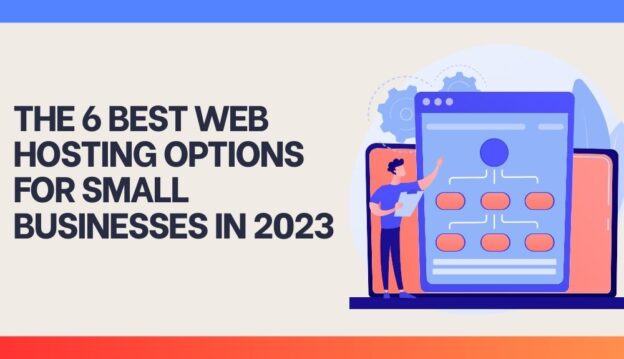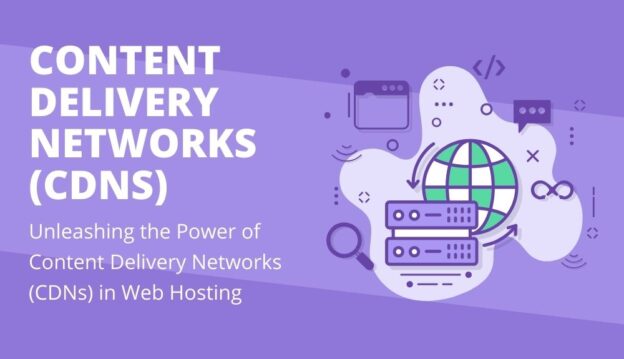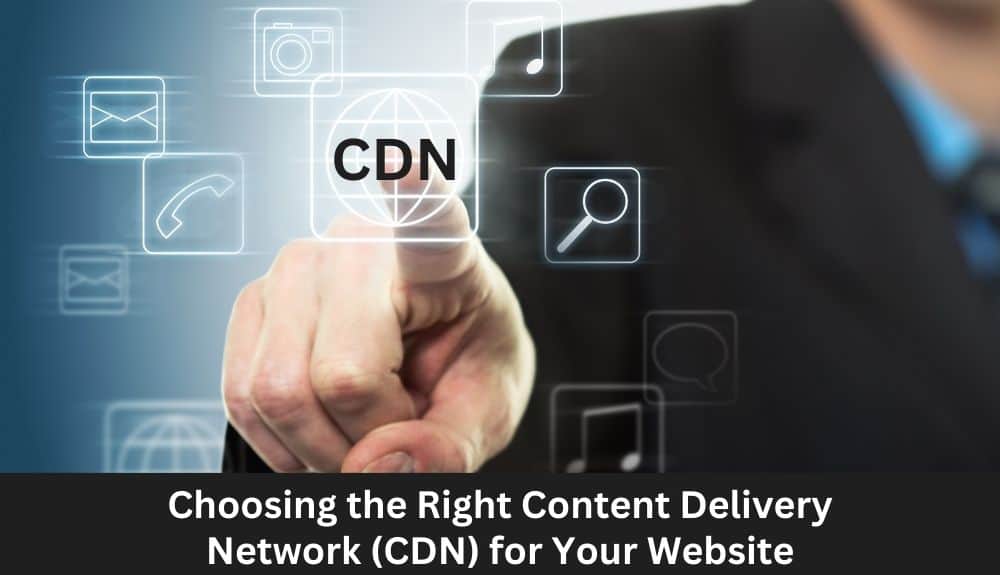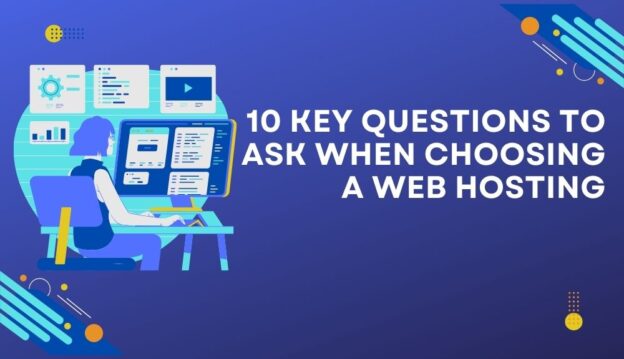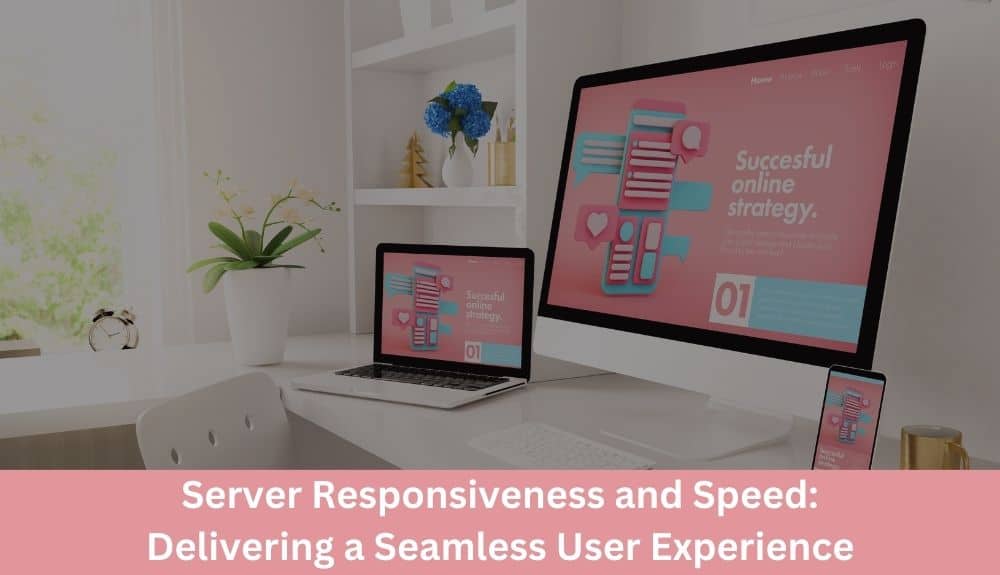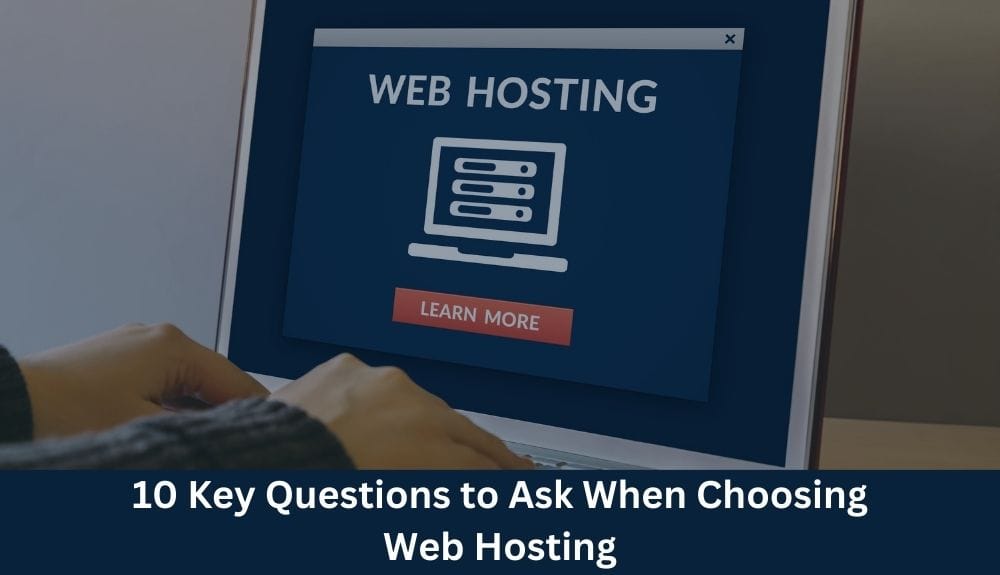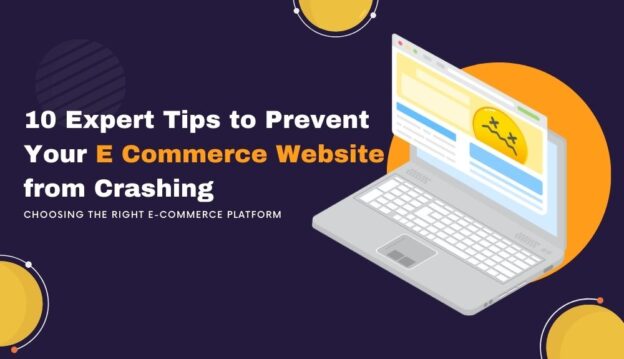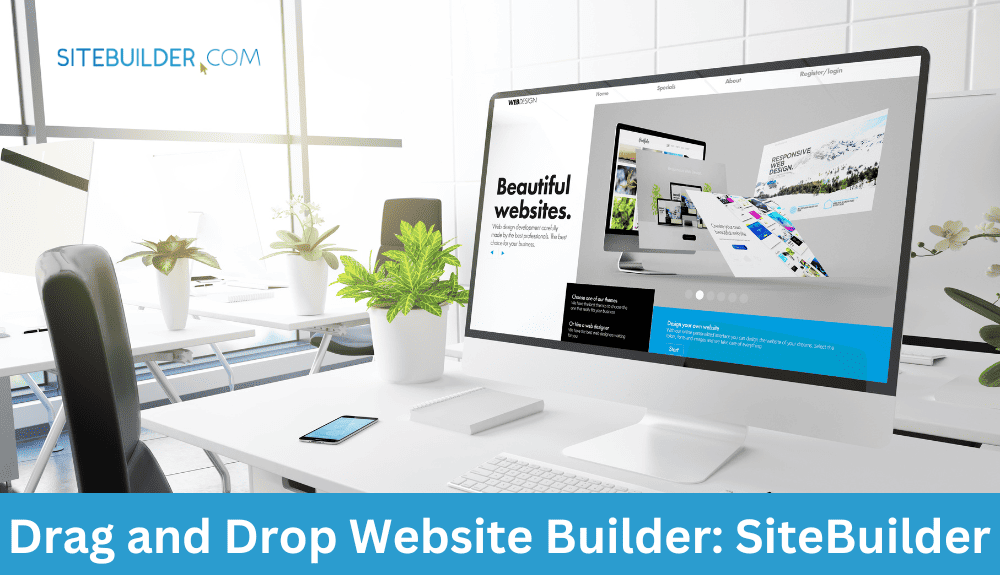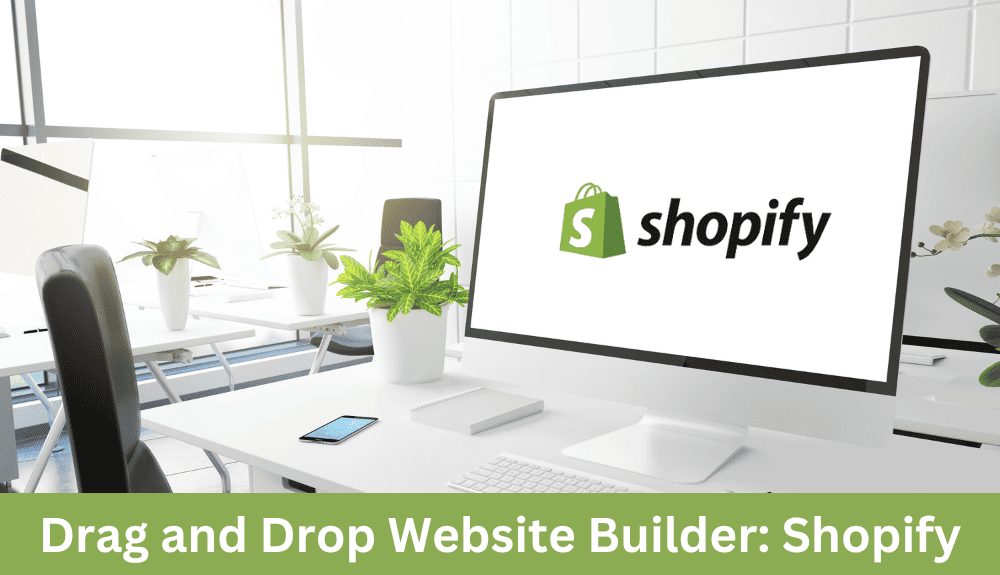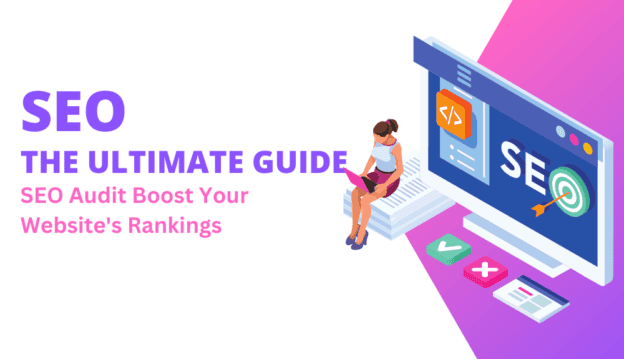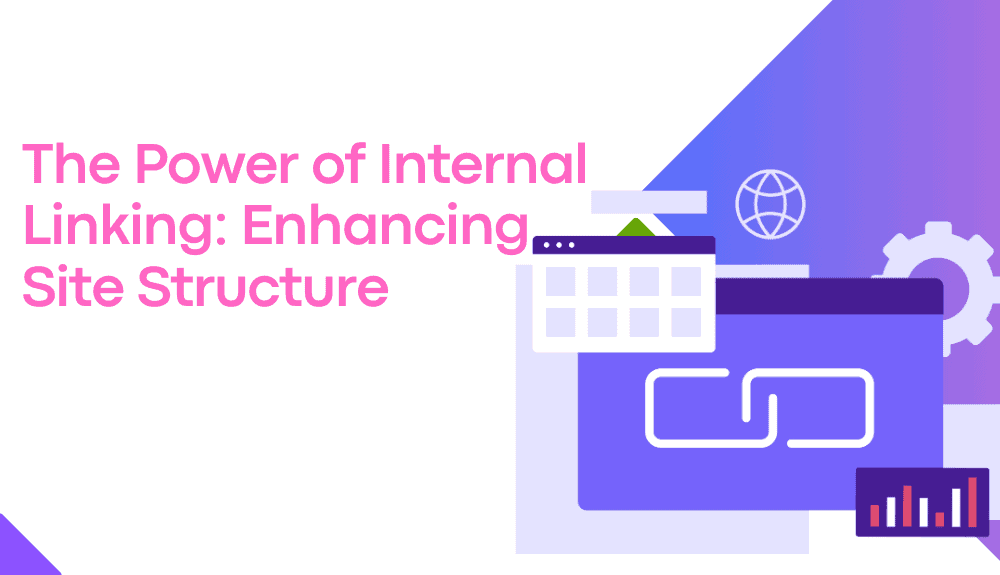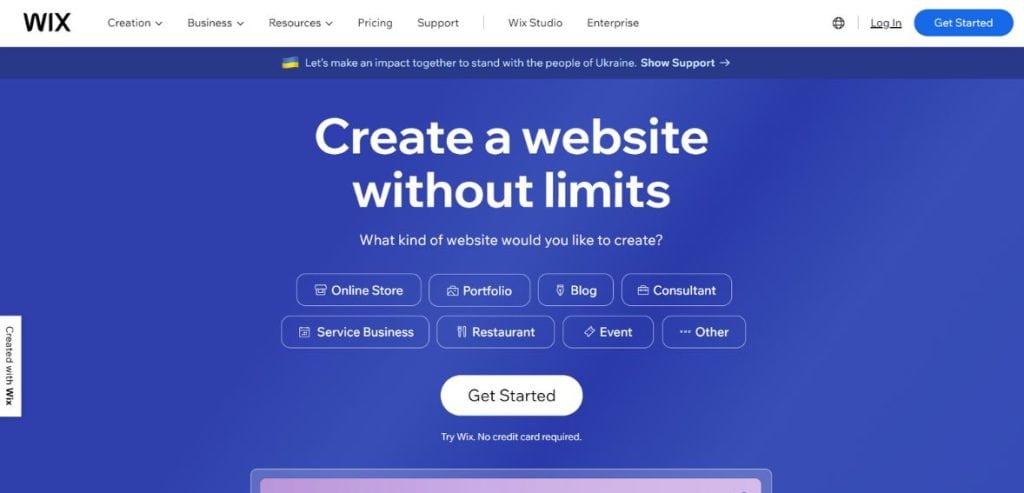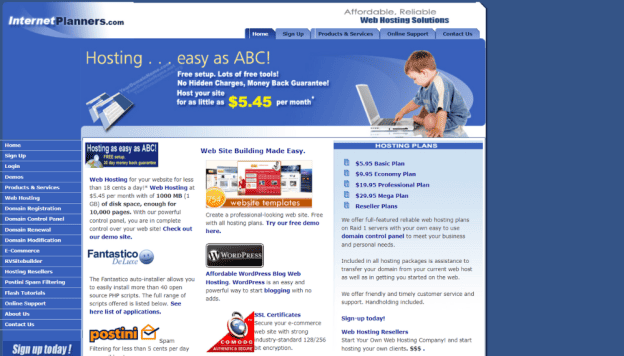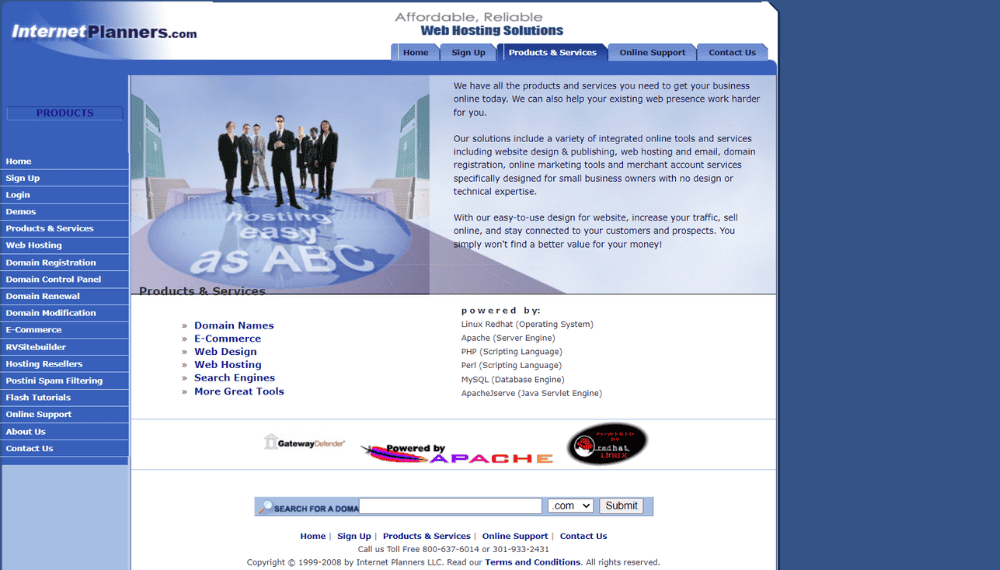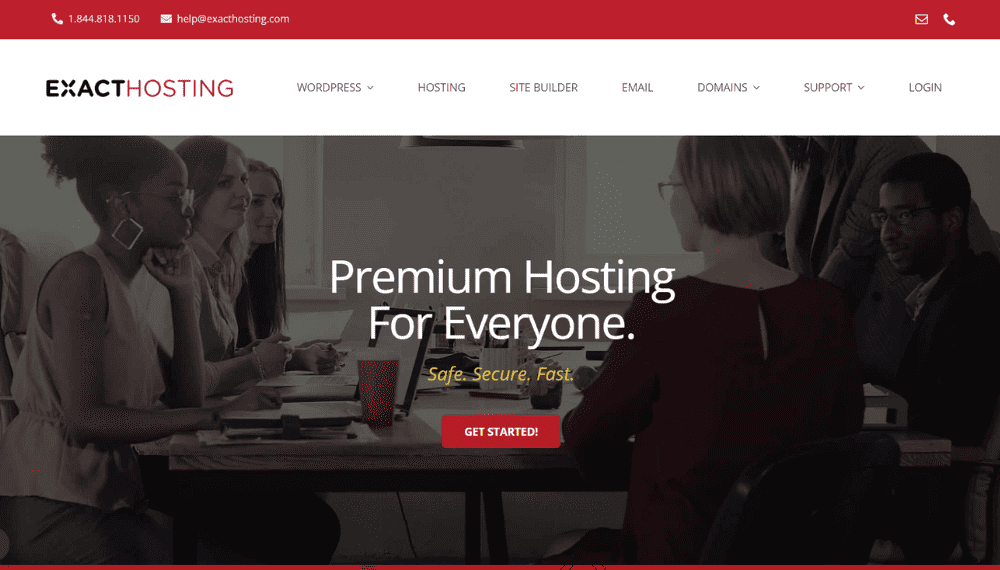Are you a small business owner looking for the best web hosting options in 2023? The right web hosting service is crucial for the success and growth of your small business website. It not only ensures that your site is accessible and secure but also plays a significant role in its speed and performance.
But with so many options to choose from, how do you find the ideal web hosting provider for your small business? That’s where we come in. In this blog, we will provide you with an in-depth analysis of the 6 best web hosting options specifically designed for small businesses in 2023.
We will compare their features, pricing, customer reviews, and more to help you make an informed decision. From reliable shared hosting plans to powerful virtual private servers (VPS) and dedicated hosting options, we’ve got you covered. Whether you’re a beginner starting a WordPress website or an established business looking for additional storage and security features, our list will have the perfect web hosting solution for you.
Don’t let your online presence be hindered by subpar web hosting. Join us as we explore the top web hosting options that can take your small business to new heights in 2023.
Introduction to the Best Web Hosting Services for Small Businesses
Choosing the right web hosting service is crucial for the success of your small business website. A reliable web hosting provider ensures that your site is always accessible, performs well, and provides a seamless user experience. In this article, we will explore the top 6 web hosting options specifically tailored for small businesses.
When selecting a web hosting service, it is important to consider factors such as uptime guarantees, security features, customer support, pricing, and scalability. These factors play a significant role in ensuring a smooth online presence for your small business.
Now, let’s take a closer look at the best web hosting services for small businesses. We will delve into their features, pricing, and customer reviews, providing you with all the necessary information to make an informed decision for your website.
Without further ado, here are the top 6 web hosting services for small businesses:
1. HostGator
2. Bluehost
3. TMDHosting
4. DreamHost
5. InMotion Hosting
6. InterServer
Each hosting provider offers unique features and benefits that cater to the specific needs of small businesses. By the end of this article, you’ll have a comprehensive understanding of these top web hosting services, empowering you to select the one that aligns best with your business requirements.
Let’s explore each option in detail and discover the exceptional benefits they bring to small business websites.
HostGator
When it comes to reliable web hosting options for small businesses, HostGator is undoubtedly one of the top choices. With its impressive range of features, competitive pricing, and excellent customer reviews, HostGator proves to be a suitable platform for businesses of all sizes.
Features
HostGator offers a wide array of features that cater specifically to the needs of small businesses. The platform provides unlimited storage, bandwidth, and email accounts, ensuring that your website has ample resources to accommodate your growing business. Additionally, HostGator offers a free SSL certificate, which enhances your website’s security and protects your customers’ sensitive information.
The web hosting service also boasts a user-friendly control panel, making it easy for even beginners to manage their websites effectively. HostGator integrates seamlessly with popular content management systems like WordPress, offering a smooth and hassle-free experience for website owners.
Pricing
HostGator offers hosting packages that are both affordable and feature-rich. Their shared hosting plans start at just $2.75 per month, making it an excellent choice for small businesses with limited budgets. Additionally, the provider offers a variety of hosting options, including cloud hosting, WordPress hosting, and dedicated hosting, allowing businesses to choose the option that best suits their needs and scalability requirements.
Customer Reviews
HostGator has garnered positive reviews from its customers, highlighting its reliable performance, excellent uptime, and responsive customer support team. The platform’s 99.9% uptime guarantee ensures that your website remains accessible to visitors at all times, minimizing any potential loss of business.
One customer stated, “HostGator has been my go-to hosting provider for my small business website. Their reliable service and affordable pricing have exceeded my expectations. The customer support team is always friendly and helpful whenever I have any questions or issues.”
In conclusion, HostGator proves to be a leading web hosting provider for small businesses. With its comprehensive features, competitive pricing, and positive customer reviews, it offers a reliable and user-friendly platform to help businesses establish and maintain an effective online presence. Whether you’re a budding entrepreneur or an established small business owner, HostGator is a hosting option worth considering.
Bluehost: A Reliable Hosting Solution for Small Businesses
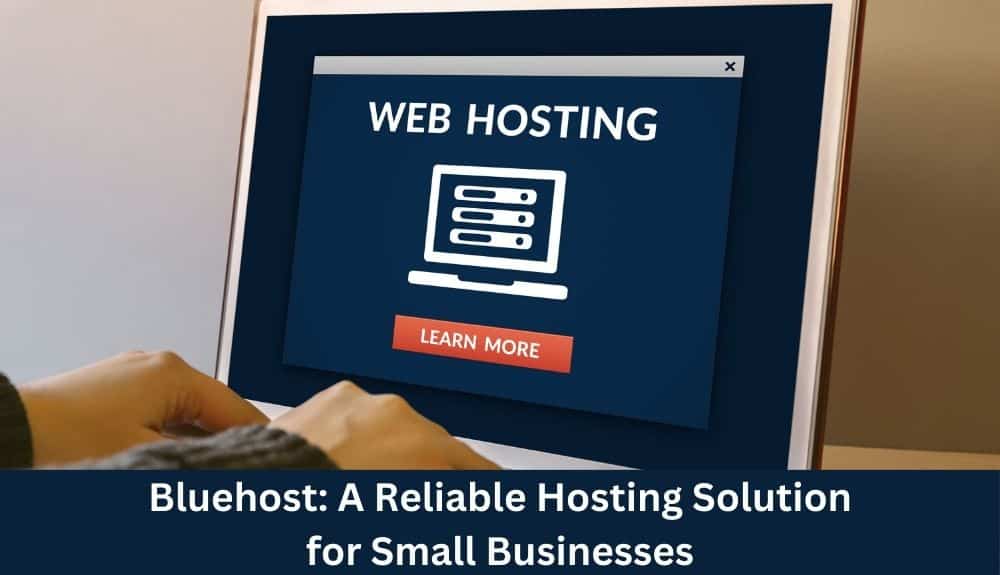
Bluehost is a highly recommended web hosting provider that offers a range of features specifically tailored for small businesses. With its excellent reputation in the industry, Bluehost has become a popular choice among entrepreneurs and website owners.
Features:
– Easy-to-use Control Panel: Bluehost provides a user-friendly interface, making it simple for small business owners to manage their websites and hosting settings.
– Unlimited Storage and Bandwidth: With Bluehost, you can have peace of mind knowing that there are no limitations on the amount of data you can store or the traffic your website can handle.
– Free Domain Name: When you sign up for a hosting plan with Bluehost, you’ll receive a free domain name for the first year, helping you establish a professional online presence.
– Free SSL Certificate: Bluehost prioritizes website security by offering free SSL certificates. This ensures that your visitors’ data is encrypted and protected while browsing your website.
– One-Click WordPress Installation: If you’re planning to build your small business website with WordPress, Bluehost makes it incredibly easy to get started with its one-click installation feature.
Pricing:
Bluehost offers affordable hosting packages. For small businesses, the Basic plan is often ideal, starting at just [$2.75 per month](https://www.bluehost.com/wordpress/hosting/shared). This plan includes a free domain, SSL certificate, and unmetered bandwidth.
In conclusion, Bluehost stands out as a reliable and feature-rich hosting option for small businesses. Its user-friendly interface, generous storage and bandwidth, and excellent customer support make it a top choice for entrepreneurs looking to establish and grow their online presence.
TMDHosting
TMDHosting is a reliable web hosting service that offers a range of features specifically designed for small businesses. With its exceptional performance and customer-oriented approach, TMDHosting stands out as a top choice for entrepreneurs looking to establish a strong online presence.
Features
– Free Domain: TMDHosting provides a free domain name registration for your small business website, allowing you to save on additional costs.
– Secure Hosting: The company prioritizes security and offers free SSL certificates to ensure that your website and customer data are protected.
– Unlimited Storage: TMDHosting offers unlimited storage for your website files, allowing you to scale your business without worrying about storage limitations.
– Uptime Guarantee: With a 99.9% uptime guarantee, TMDHosting ensures that your website will be available to your customers at all times.
– Customer Support: TMDHosting offers 24/7 customer support, ensuring that you can reach out for assistance whenever you face any issues.
Pricing
TMDHosting provides affordable pricing options that suit the needs and budgets of small businesses. They offer different hosting packages, including shared hosting, cloud hosting, and VPS hosting, allowing you to choose the most suitable option for your business.
TMDHosting’s focus on catering to the specific needs of small businesses, combined with its range of features and excellent customer support, makes it an ideal web hosting choice. Whether you run an e-commerce store, a WordPress website, or any other type of small business site, TMDHosting offers the resources and support you need to establish a successful online presence.
DreamHost
DreamHost is a top web hosting provider known for its reliable services and excellent customer support. It offers a range of features that make it a great choice for small businesses in need of a reliable and secure hosting solution.
Features
DreamHost provides several features that cater specifically to the needs of small businesses:
1. Free Domain: With DreamHost, you get a free domain name for the first year, helping you establish your online presence without additional costs.
2. WordPress Hosting: DreamHost offers optimized WordPress hosting, making it an ideal choice for small businesses with WordPress websites. The platform provides a seamless experience with easy installation, automatic updates, and built-in security features.
3. Unlimited Storage: One of the significant advantages of choosing DreamHost is the unlimited storage space it offers. This ensures that your small business website has enough room to grow and accommodate your content.
4. Free SSL Certificate: DreamHost includes a free SSL certificate with every hosting plan. This certificate adds an extra layer of security to your website, encrypting data and providing a secure browsing experience for your visitors.
Pricing
DreamHost offers affordable pricing plans for small businesses:
1. Shared Hosting: Starting at $2.59 per month, DreamHost’s shared hosting plans are budget-friendly options for small businesses. These plans provide reliable performance and sufficient resources for websites with moderate traffic.
2. VPS Hosting: For small businesses with higher traffic and resource demands, DreamHost’s VPS hosting plans start at $10 per month. These plans offer dedicated resources, improved performance, and greater control over your hosting environment.
In conclusion, DreamHost offers a robust hosting solution for small businesses with features like free domain registration, WordPress optimization, unlimited storage, and free SSL certificates. Its affordable pricing plans and positive customer reviews make it a reliable choice for small business owners. Consider DreamHost when looking for a hosting provider that can meet the needs of your growing small business website.
InMotion Hosting: Features, Pricing, and Customer Reviews
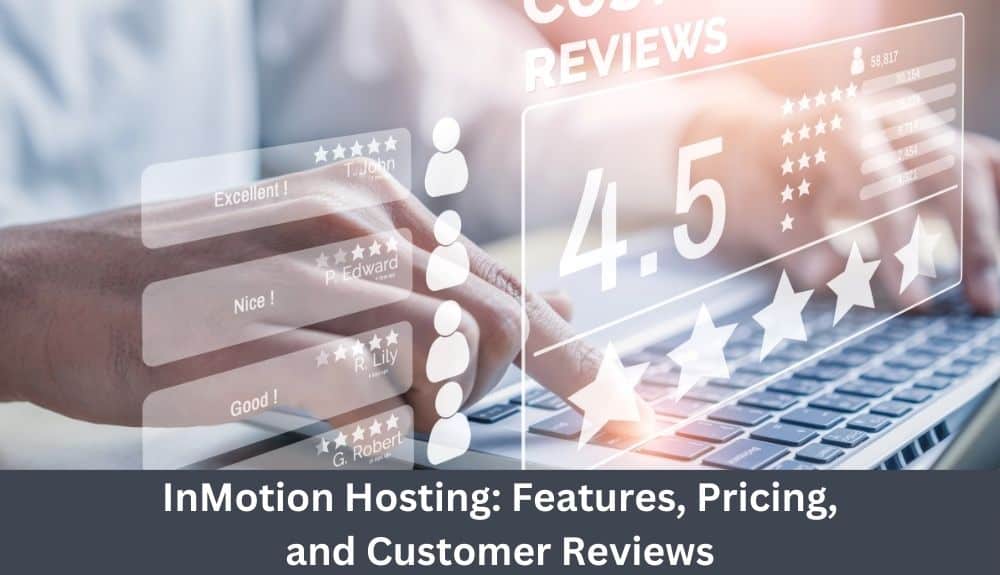
InMotion Hosting is a reliable and feature-rich web hosting provider that offers tailored solutions for small businesses. With its robust features and affordable pricing plans, InMotion Hosting is a popular choice among small business owners looking to establish their online presence. Let’s delve into the key features, pricing options, and customer reviews that make InMotion Hosting an ideal web hosting solution for small businesses.
Features
InMotion Hosting provides a comprehensive range of features to cater to the needs of small businesses. Here are some notable features offered by InMotion Hosting:
1. Free SSD Storage: InMotion Hosting ensures blazing-fast website performance by offering free SSD storage, which significantly improves loading times and enhances the overall user experience.
2. Unlimited Bandwidth: With InMotion Hosting, you won’t have to worry about bandwidth limitations as they offer unlimited bandwidth, allowing your website to handle high volumes of traffic without any disruptions.
3. Free Domain: InMotion Hosting provides a free domain name registration or transfer for the first year, helping you establish a professional online presence.
4. Reliable Uptime: InMotion Hosting guarantees a 99.9% uptime, ensuring that your website remains accessible to visitors at all times.
5. Secure Environment: InMotion Hosting prioritizes security and offers features such as free SSL certificates, DDoS protection, and secure email accounts to safeguard your website and customer data.
Pricing
InMotion Hosting offers flexible pricing plans tailored to the needs of small businesses. Their plans include:
1. Shared Hosting: InMotion Hosting’s shared hosting plans start at $5.99 per month, offering unlimited disk space, unlimited email accounts, and the ability to host multiple websites.
2. WordPress Hosting: InMotion Hosting provides optimized WordPress hosting plans, starting at $6.99 per month, with additional features like pre-installed WordPress, automatic updates, and WordPress-specific support.
3. VPS Hosting: For businesses looking for more control and resources, InMotion Hosting offers VPS hosting plans starting at $29.99 per month, providing dedicated resources and scalability.
In conclusion, InMotion Hosting is an excellent web hosting provider for small businesses, offering a wide range of features, competitive pricing, and reliable performance. With their user-friendly interface and excellent customer support, InMotion Hosting is a trusted choice for businesses seeking a reliable web hosting solution.
InterServer: Affordable and Reliable Web Hosting for Small Businesses
When it comes to finding an affordable and reliable web hosting service for your small business, InterServer is a top choice. With its range of features, competitive pricing, and positive customer reviews, InterServer proves to be a suitable option for small businesses looking to establish a strong online presence.
Features
InterServer offers a range of features that cater specifically to the needs of small businesses. With its one-click installation of popular applications like WordPress and Joomla, getting your website up and running is a breeze. The hosting service also provides unlimited storage and bandwidth, ensuring that your website can handle the demands of your growing business. Additionally, InterServer offers a free SSL certificate, which guarantees the security of your customers’ data and boosts your website’s credibility.
Pricing
One of the standout features of InterServer is its affordable pricing structure. Unlike many hosting providers that lure you in with low introductory rates, InterServer offers a price lock guarantee. This means that the price you sign up for is the price you’ll pay for the lifetime of your account. This makes InterServer a cost-effective option, especially for small businesses operating on a tight budget.
In conclusion, InterServer offers a blend of affordability, reliability, and excellent customer support that makes it an ideal choice for small businesses. With its robust features, cost-effective pricing, and positive customer reviews, InterServer stands out as a reputable web hosting option. Consider InterServer for your small business website hosting needs and enjoy a seamless online experience for your customers.
Conclusion and Final Thoughts
After exploring the top web hosting services for small businesses, it’s clear that choosing the right provider is crucial for the success of your website. Let’s summarize the key points discussed in this article and offer some final thoughts on the best web hosting options.
1. HostGator: With its affordable pricing plans and user-friendly interface, HostGator is a reliable choice for small businesses. Their excellent customer support and 99.9% uptime guarantee ensure a smooth experience for website owners.
2. Bluehost: As one of the most popular web hosting providers, Bluehost offers a range of features tailored to small businesses. Their easy WordPress integration, free domain, and unlimited storage make it an attractive option for beginners.
3. TMDHosting: Known for its fast loading times and excellent security features, TMDHosting is a strong contender for small business websites. Their wide range of hosting plans ensures scalability as your business grows.
4. DreamHost: With its emphasis on providing reliable and affordable hosting solutions, DreamHost is a popular choice among small business owners. Their commitment to renewable energy and their transparent pricing plans make them an environmentally friendly option.
5. InMotion Hosting: Known for its exceptional customer support and reliable performance, InMotion Hosting caters to small businesses of all types. Their free SSL certificate and easy-to-use website builder are additional benefits.
6. InterServer: Offering affordable and feature-rich hosting packages, InterServer is a viable option for small businesses. Their robust security measures and flexible plans make them a reliable choice for businesses with specific requirements.
In conclusion, when choosing a web hosting service for your small business, consider factors such as budget, performance, customer support, and scalability. Assess your business’s needs and select a provider that best aligns with your goals. Remember to prioritize features like uptime guarantees, security, and ease of use.
By opting for one of these top web hosting options, you can ensure a reliable and efficient online presence for your small business. Make an informed decision and watch your website thrive!

